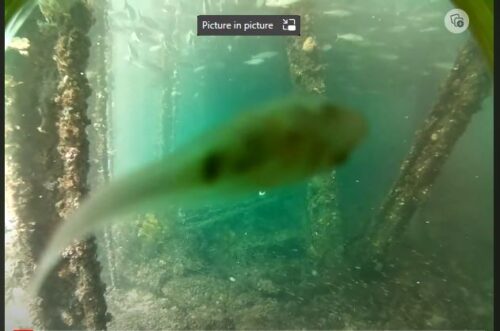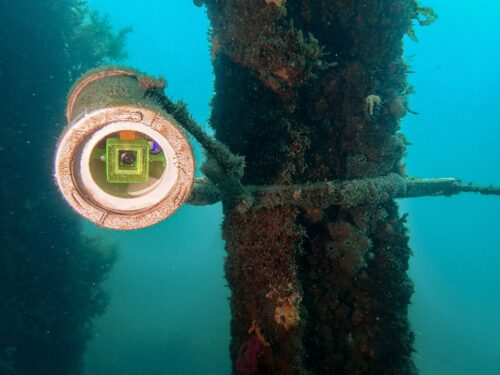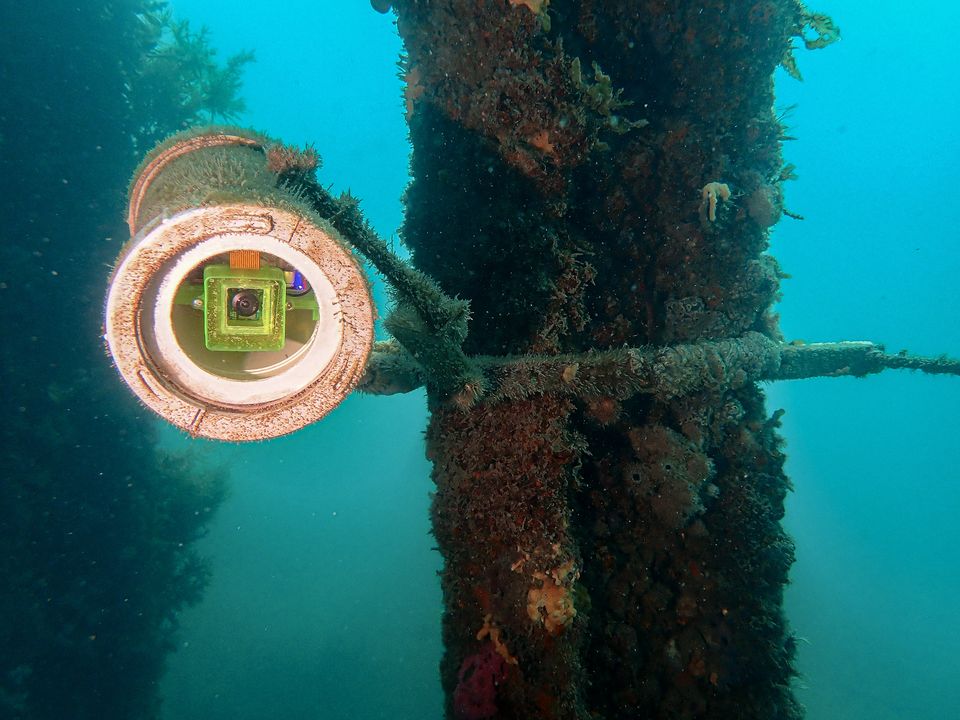AusOcean’s Trek Hopton sent in video footage from the Rapid Bay jetty underwater camera showing what appears to be a western cleaner clingfish on the lens of the camera. It can be seen at 11.12 at https://www.youtube.com/live/DW5VEhcmFsI?feature=share&t=672. Certainly, the little fish is, as Trek suggests, a “Bit too close for proper focus”.

David Muirhead commented, “Begs the question, do you have a system for cleaning the video camera lens port? Or do you remove any film of algae, cyanobacteria, etc.. as part of your routine maintenance? Or perhaps there are certain transparent materials that are used as antifouling coatings in similar contexts e.g. national submarine defence technology? I’ve no idea. But for what it’s worth, that Western Cleaner Clingfish/WCC (the most likely species here) demonstrates the importance of using natural resources where possible! I don’t know if it would include such microbes in its diet (probably not, apart from as ‘bycatch ‘ when scraping mucus, squamous debris and fungal excesses off client fish, because they don’t only eat a client’s external and oral parasites), but it is possible, indeed probable that WCCs often use your fixed camera array as a convenient station (cleaning station for clients with parasites to visit).
“After all, one of the criteria considered important to WCCs in this niche ecological role is that they must choose a station highly visible to potential clients. WCCs are weak swimmers that need their food sources to come to them. Maybe you are finding that you don’t need to wipe clean the external glass port surface as often as you would expect?”

Photo taken from AusOcean’s Facebook page
(Source: https://www.facebook.com/photo/?fbid=503992458537594&set=a.503992451870928 )
AusOcean state that they always relied “solely on divers for equipment upkeep”, until now that is. They have now informed us that “Ella Di Stasio (has) devised and implemented a cost-effective antifouling experiment utilising UVC light to maintain the cleanliness of our camera lenses. This tech will provide us with a reliable alternative to relying solely on divers for equipment upkeep.
“Unlike traditional biocidal coatings that use harmful chemicals to deter biofouling, UVC light makes the lens surface inhabitable for microorganisms, preventing them from reproducing and attaching to the camera’s surfaces. This innovative technology has the potential to revolutionise the way we maintain our underwater equipment. We look forward to sharing the results.”
As for David’s suggestion re western cleaner clingfish use, David later took the matter further by writing to Trek again – “After viewing the Rapid Bay jetty video clip you kindly shared with me, I began to wonder if these clingfish habitually clear a little area of any station that they are currently using. It makes sense in a simple way. For example having your own little spot on a station shared by several WCCs (a common scenario albeit usually with larger stations e.g. sponges). On a very small station like this kelp stump, I can imagine other benefits, but I won’t bore you with further speculation.

“My Noarlunga reef image doesn’t prove that the WCC has cleared a space on the Kelp stump, but it looks suggestive. There is less of the fine white threads on the stump immediately surrounding the fish. I don’t know what the white stuff is, but I think it is probably an epibiotic hydrozoan, or perhaps cyanobacterial?”
My thanks go to Trek & David for their assistance in this matter.


Steve,
Thanks to YOU again!
Regards,
David.